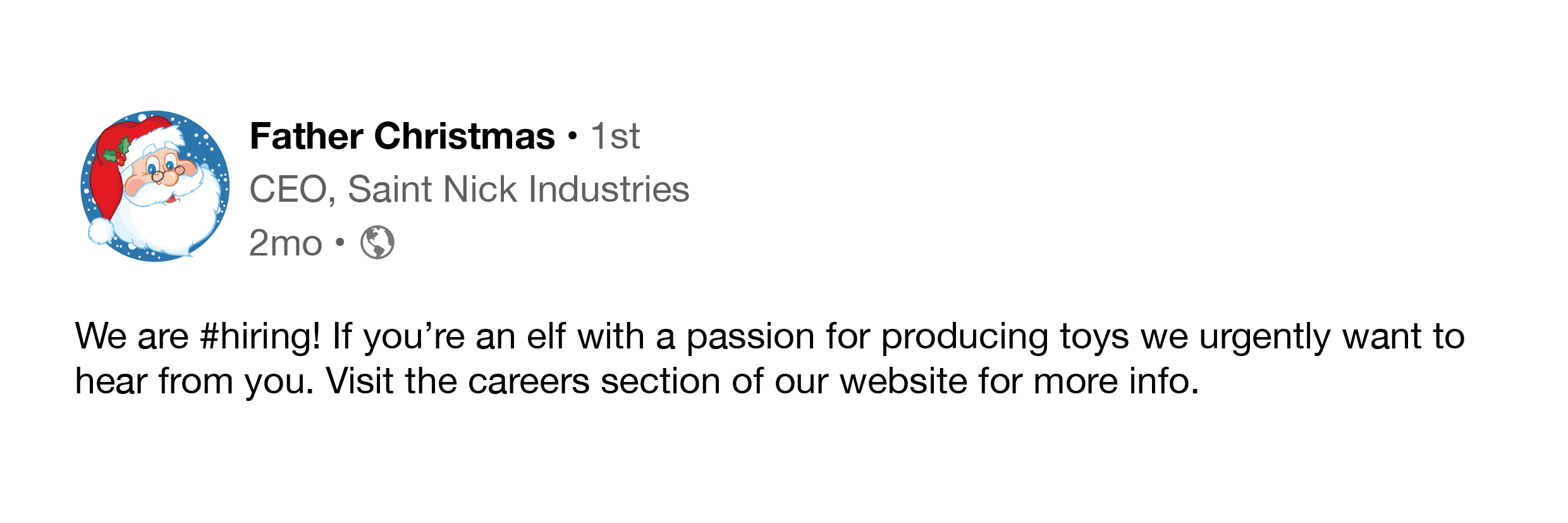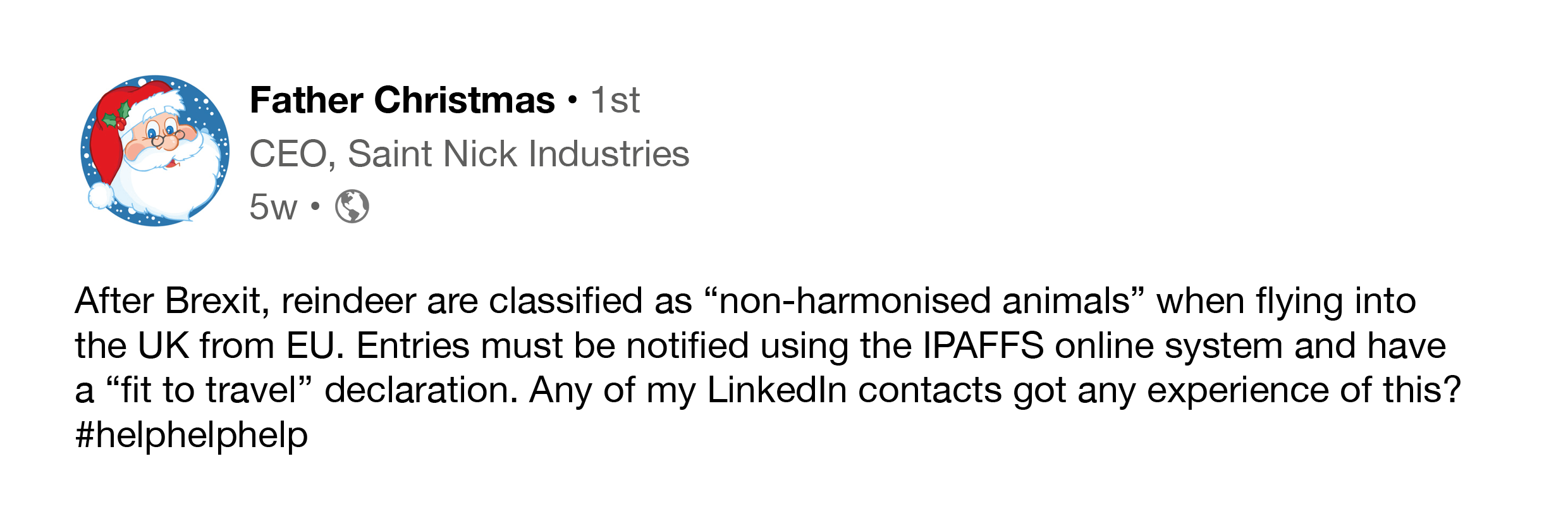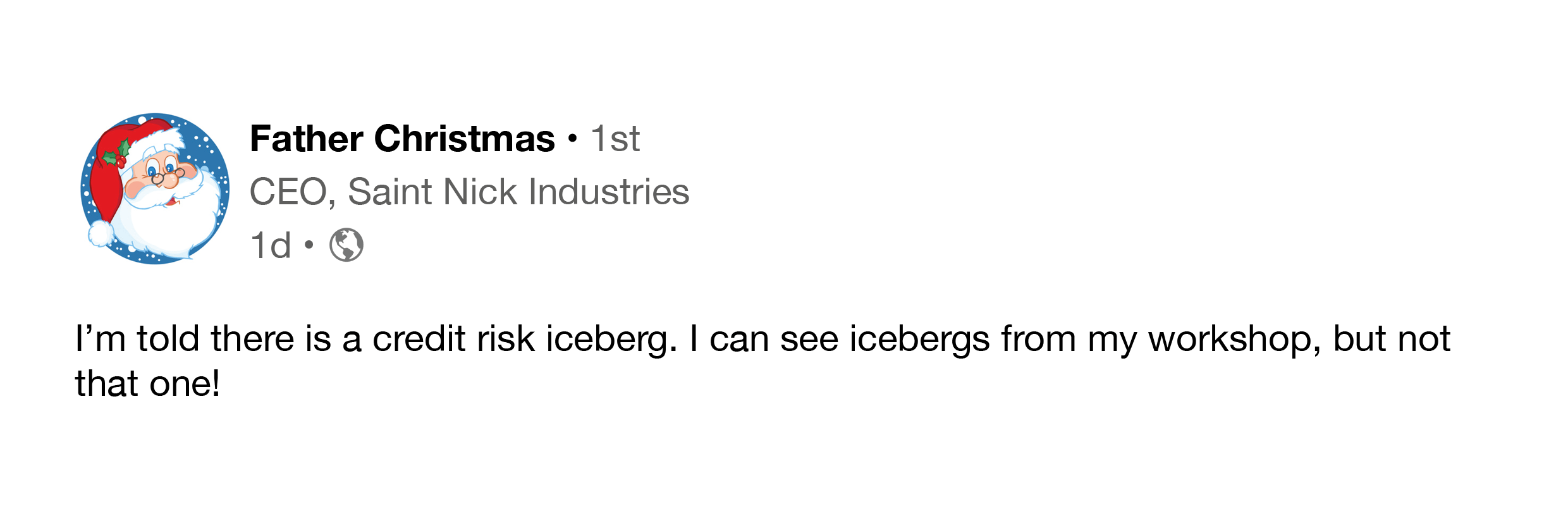Santa’s LinkedIn posts have been getting frantic.
His decision to centralise manufacturing in a single global hub in Northern Lapland previously seemed a wise choice, offering the economies of scale needed to fulfil over 100 million Christmas lists each year. And his co-located B2C global distribution centre guarantees overnight delivery to every customer worldwide (except the naughty ones).
However, amid the supply chain and other problems of late 2022, his business model is under strain.
To get an insight into his problems, some of his recent LinkedIn posts were analysed by two experts from Allianz Trade UK: Simon Etherington and Christine Brennan, who are assistant heads of risk underwriting and technical managers.







